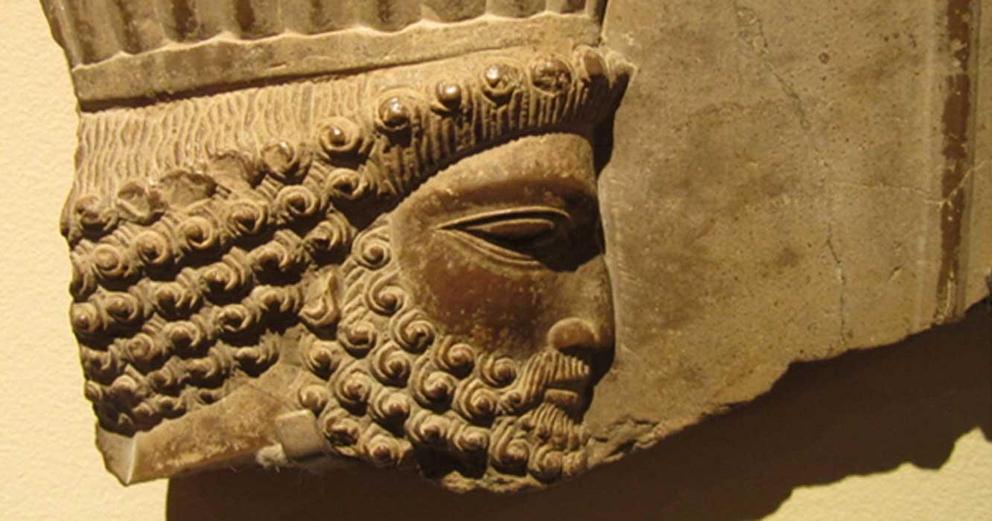Explaining the fall of the great Akkadian Empire
Top image: Sargon the Great, founder of the Akkadian Empire.
The Akkadian Empire was an ancient empire that existed towards the end of the 3 rd millennium BC. This was the first empire in Mesopotamia , and some consider it to be the first true empire in world history. The Akkadian Empire was established by Sargon of Akkad , arguably its most famous ruler, and dominated Mesopotamia from its capital, Akkad. The influence of the Akkadian Empire was also felt beyond the borders of the empire. This mighty empire did not last very long, however, as it collapsed about a century and a half after it was founded.
The period of Mesopotamian history preceding the foundation of the Akkadian Empire is referred to by archaeologists as the Early Dynastic period, which lasted from around 2900 to 2350 BC. The Early Dynastic period saw the rise of city states in southern Mesopotamia, including Ur, Uruk, Lagash, and Kish. The political landscape of the region at that time was fragmented, and the city states frequently went to war against each other. On the other hand, the material culture from the various polities demonstrates that they were culturally homogeneous.
While southern Mesopotamia was ruled by the Sumerians, northern Mesopotamia was dominated by the Akkadians. Like the Sumerians, the Akkadians also established their own city states and fought against each other.
The situation in Mesopotamia changed during the 24 th century BC with the rise of the Akkadian Empire. Thanks to the Akkadian Empire, both the Sumerians of southern Mesopotamia and the Akkadians of northern Mesopotamia were brought under one rule for the first time in the region’s history. The man responsible for this unification was Sargon of Akkad, who is considered to be one of the earliest empire builders in the world.
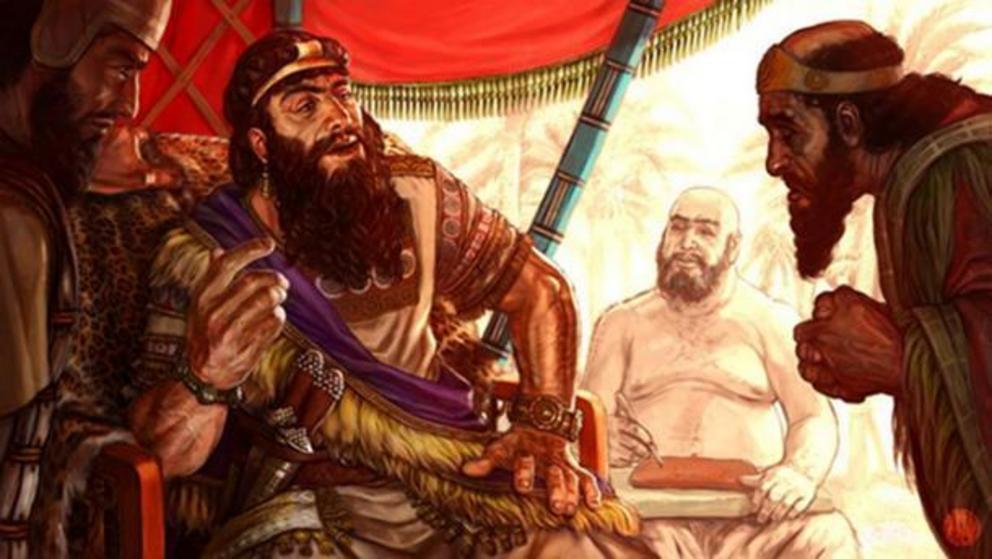 Modern representation of Sargon of Akkad speaking with one of his subjects.
Modern representation of Sargon of Akkad speaking with one of his subjects.
The Akkadian Empire’s First Ruler
From a historical point of view, little is known about Sargon’s life, since there is currently a lack of contemporaneous documentary evidence. This is due partially to the fact that Akkad, the capital of the Akkadian Empire, has yet to be identified, and therefore, whatever records are written and stored in that city are still to be discovered. Instead, one has to rely on sources written much later on to learn about Sargon’s life. These are in the form of legends and folktales, which is unsurprising, considering the reputation that this great ruler left behind.
The legends state that as a baby, Sargon was found floating in a basket on a river. He was found by a gardener who adopted him and raised him as his own son. The identity of his real father is unknown, whereas his mother is said to have been a temple prostitute or priestess of a town in the middle Euphrates. Although Sargon, like his adopted father, was a humble gardener, and did not have any influential relatives, he succeeded in attaining the position of cupbearer to the ruler of the city state of Kish.
According to a legend known as the Sargon Legend , the name of the ruler of Kish was Ur-Zababa, who appointed Sargon as his cupbearer for unknown reasons. The royal cupbearer was a very important post at that time, as it brought its holder extremely near to the ruler and made him one of his closest and most trusted advisors.
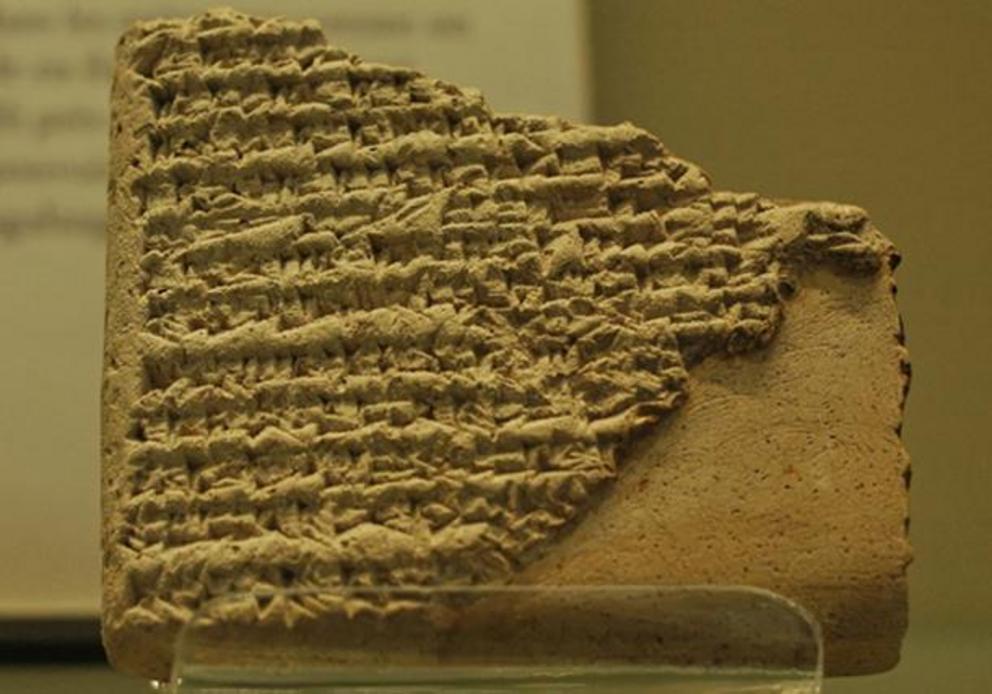 Clay tablet relating the birth of Sargon, first ruler of the Akkadian Empire, and his quarrel with king Ur-Zababa of Kish.
Clay tablet relating the birth of Sargon, first ruler of the Akkadian Empire, and his quarrel with king Ur-Zababa of Kish.
In the Sargon Legend , Sargon has a dream in which Ur-Zababa was drowned by a young woman in a great river of blood. The king discusses this dream with Sargon and becomes incredibly frightened. Therefore, he plots to get rid of Sargon.
He gave a bronze hand-mirror to be delivered to Belic-tikal, the king’s chief smith, at the E-sikil. Once the object was delivered, the smith was to throw it and Sargon into the mold, thereby killing him. Sargon obeys the king’s orders and goes to the E-sikil without knowing Ur-Zababa’s evil plot. Before reaching the place, however, he is stopped by the goddess Inanna, who told him that the E-sikil is a holy place and that no one polluted by blood may enter it. Therefore, Sargon met the smith outside the building to hand over the mirror and thus was not killed.
Some days later, Sargon returned to the king, and Ur-Zababa, seeing that Sargon was still alive, became frightened once more. This time, he decides to send Sargon to Lugal-zage-si, the king of Uruk, with a message telling the king to slay the messenger. The rest of the legend is lost and therefore the end of the story is unknown. Nevertheless, it is likely that it deals with the manner in which Sargon becomes king.
In any case, it is known that Lugal-zage-si was a powerful ruler who united the city states of Sumer. It is also known that once Sargon came to power, he attacked Lugal-zage-si and defeated him. Once the southern Mesopotamian city states were defeated, Sargon washed his hands in the ‘lower sea’ (the Gulf), which was a symbolic gesture to show that the whole of Sumer was now under his rule.
The conquest of southern Mesopotamia, however, was not enough for Sargon and he continued to expand his empire. He launched military campaigns in the east, during which he defeated Elam, and received the submission of other rulers in the region. Sargon also pushed the borders of the Akkadian Empire westwards and captured Mari and Ebla, two states in modern day Syria that constantly fought each other for regional supremacy.
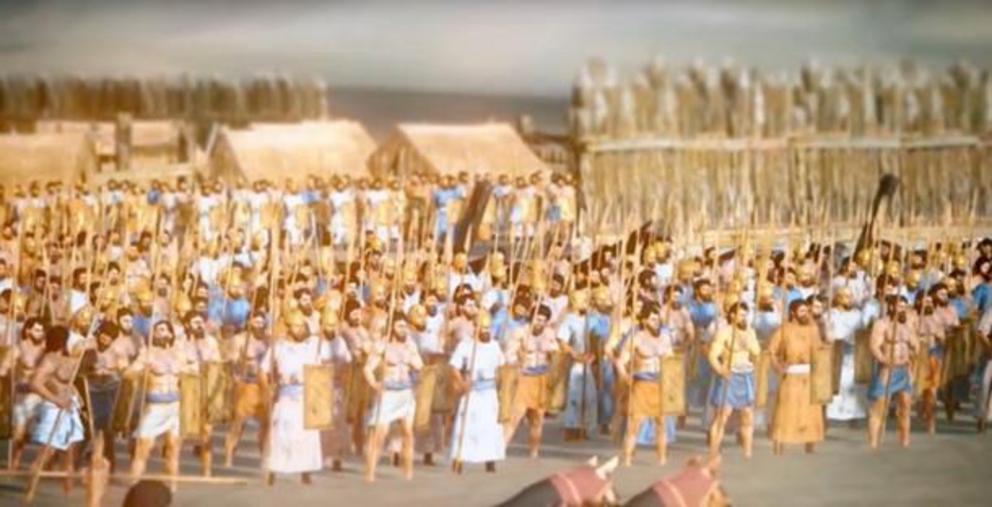 The Great Akkadian Empire.
The Great Akkadian Empire.
One of the consequences of Sargon’s conquests was the establishment of trade routes . As all of Mesopotamia was now under Akkadian rule, goods could flow safely from the north to the south via the Euphrates River. Cedar wood came from the forests of Lebanon, while precious metal was obtained from mines in the Taurus Mountains. The Akkadians traded further afield as well, with Anatolia, Magan (possibly modern Oman), and even India.
In the Epic of the King of the Battle , Sargon is said to have launched a military campaign deep into the heart of Anatolia. This alleged campaign was conducted to protect merchants from the ruler of Burushanda, who was exploiting them unfairly. Incidentally, the text also claims that Sargon crossed the Mediterranean and landed on Cyprus.
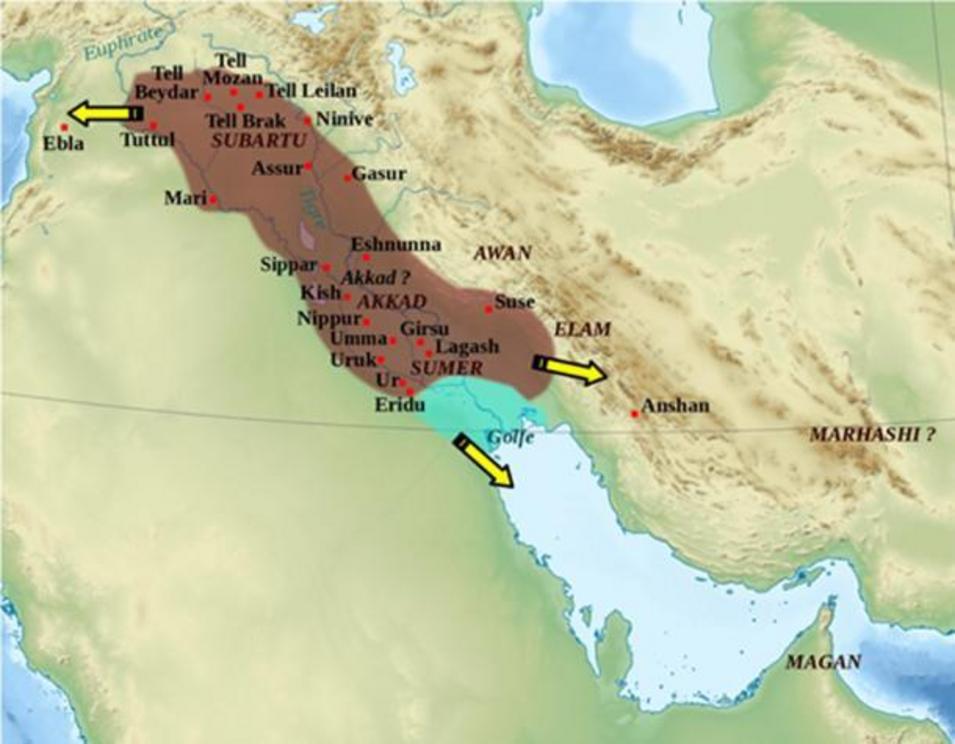 Map of the Akkadian Empire and the directions in which military campaigns were conducted.
Map of the Akkadian Empire and the directions in which military campaigns were conducted.
The Succession of Rulers Over the Akkadian Empire
Sargon reigned from around 2334 BC till his death in about 2279 BC. He was succeeded by Rimush, one of his sons. The second ruler of the Akkadian Empire reigned for about 9 years and fought hard to keep the empire intact. Numerous revolts broke out during his reign, but Rimush was able to deal with them successfully.
According to tradition, Rimush was assassinated by his own officials. He was succeeded by his older brother, Manishtushu. As his brother succeeded in stabilizing the empire’s internal affairs, Manishtushu was able to focus his resources on external matters. Apart from launching military campaigns, Manishtushu also increased trade relations with foreign powers. Like his predecessor, Manishtushu was also assassinated by his own officials.
The reigns of Rimush and Manishtushu are often forgotten by history, as they are sandwiched between two of the Akkadian Empire’s greatest rulers, Sargon before them, and Naram-Sin after them.
Naram-Sin was the fourth ruler of the Akkadian Empire. He was the grandson of Sargon and the son of Manishtushu. It was during his reign, which lasted from around 2254 to 2218 BC that the Akkadian Empire reached its peak. Naram-Sin continued the military conquests of his father and grandfather by attacking the regions of western Iran and northern Syria.
Due to his successful military expeditions, Naram-Sin adopted the title ‘King of the Four Corners of the Universe’. Additionally, Naram-Sin acquired the status of a ‘living god’, and his deification, according to an inscription, was performed at the request of the citizens. A stele, known as the Victory Stele of Naram-Sin (today housed in the Louvre Museum in Paris), depicts Naram-Sin as being larger than all the other figures around him and wearing a horned helmet on his head. Both features point towards the divine status of the king.
Apart from his military victories, Naram-Sin is recorded to have standardized the empire’s accounts. Moreover, by appointing several of his daughters as high priestesses of important cults in the Mesopotamian city states, Naram-Sin increased the prestige and religious significance of the Akkadian Empire still further.
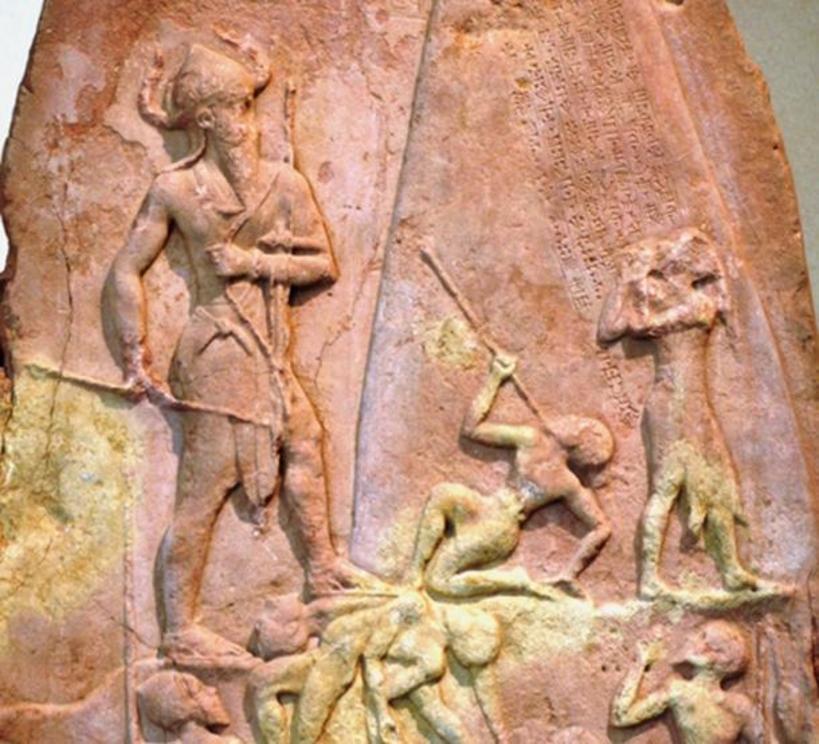 Stele of the Akkadian king Naram-Sin, ruler of the Akkadian Empire.
Stele of the Akkadian king Naram-Sin, ruler of the Akkadian Empire.
After the spectacular reign of Naram-Sin, things began to decline for the Akkadian Empire. Naram-Sin’s son and successor, Shar-Kali-Sharri, had to deal with external threats and therefore the Akkadians went on the defense. Nevertheless, he was still able to retain the control of the empire and prevented it from disintegrating.
After his death, however, there seems to have been a power struggle for the throne. Some of the city states in southern Mesopotamia seized this opportunity to reassert their independence, resulting in the loss of this territory for the Akkadians. The last two rulers of the Akkadian Empire were Dudu and Shu-Turul. By this time, however, the Akkadians no longer controlled an empire and controlled only the region around their capital.
Was the End of the Akkadian Empire Brought on by Climate Change?
The end of the Akkadian Empire occurred around 2150 BC. According to traditional accounts, the collapse of the Akkadian Empire was the result of divine retribution. As mentioned earlier, Naram-Sin had proclaimed himself a ‘living god’ and this was regarded as hubris. Ancient historians considered the extreme pride of Naram-Sin as the cause of the gods’ anger, who unleashed their wrath on his successors. This took the form of the Gutians, barbarians from the Zagros Mountains , who descended on the Akkadian Empire and destroyed everything in the path.
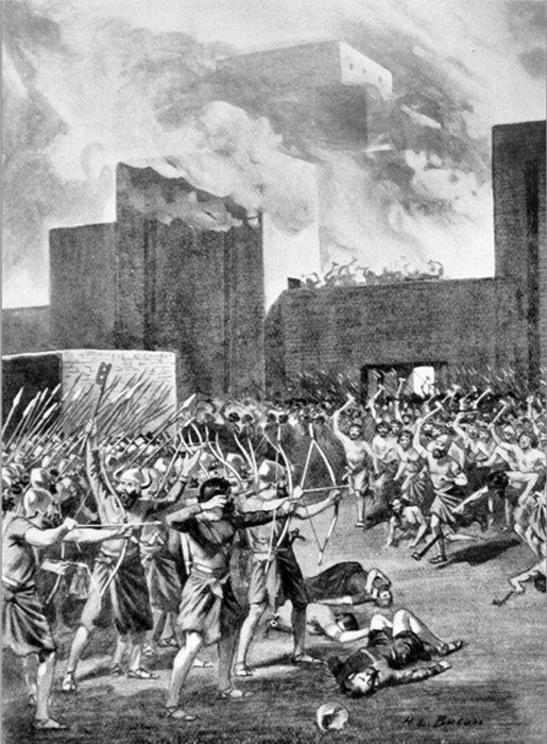 The Gutians attacking as Akkadians defend the Akkadian Empire.
The Gutians attacking as Akkadians defend the Akkadian Empire.
Modern scholars have put forward a number of other hypotheses in their attempt to make sense of the collapse of the world’s first empire. Among others, administrative incompetence, poor harvest, provincial revolt, and a giant meteor have been proposed as the cause of the Akkadian Empire’s downfall. In more recent times, the blame has been placed on climate change and evidence has been provided to support this hypothesis.
In 1993, it was reported that the Akkadian Empire suffered a long, harsh drought, and this was the cause of its demise. Microscopic analyses of soil moisture collected from Akkadian sites in the north suggest that there was severe drought starting in 2200 BC. This drought lasted for 300 years and the researchers believe that this devastated the Akkadian Empire. Signs of this drought is also visible in the archaeological record, where several Akkadian cities in the northern plains were found to have been abandoned suddenly. The migration of peoples to the south is also reported in clay tablets.
Incidentally, the researchers did not have a clear idea on the cause of the drought and factors such as changing wind patterns and ocean currents, as well as a massive volcanic eruption in Anatolia at the beginning of the drought, have been proposed.
The drought hypothesis, which was proposed by Dr. Harvey Weiss of Yale University, has had its supporters and critiques over the years. One of the criticisms of this hypothesis is that the data, including marine cores from the Red Sea and the Gulf Oman that were collected subsequently, was simply not accurate enough to link firmly the drought and the changes that occurred in the Akkadian Empire during that period.
More recently, however, stalagmites from a cave in Iran have been collected and studied by a team of researchers led by Dr. Stacy Carolin. Although the cave is located in the east, far beyond the borders of the Akkadian Empire, it is directly downwind, which means that most of the dust deposited there would have been from the deserts of Syria and Iraq.
Based on the fact that the dust from the desert contains a higher amount of magnesium from the local limestone that form the cave’s stalagmites, the researchers were able to determine the dustiness of the cave floor at a particular period. The higher the concentration of the magnesium, the dustier the floor, and by extension, the drier the conditions of the desert.
Additionally, the stalagmites could be dated precisely using uranium-thorium chronology and it was found that there were two major drought periods, one of which occurred around the time of the Akkadian Empire’s collapse and lasting 290 years.
 Cave stalagmites found in Syria and Iraq help experts study the Akkadian Empire.
Cave stalagmites found in Syria and Iraq help experts study the Akkadian Empire.
After the fall of the Akkadian Empire, Mesopotamia was dominated by the Gutians, though little is known about this period. Around 2100 BC, the Third Dynasty of Ur came to power, marking a shift of power back to the Sumerians after a period of domination by the Akkadians.
Although documents during that time were written in Sumerian once more, the language itself was gradually becoming extinct. Indeed, during the Akkadian period, the Sumerian language was being replaced by the Akkadian language. Thanks to the Akkadian Empire, the Akkadian language became the lingua franca of the region and continued to be used by succeeding Mesopotamian civilizations, including the Assyrians and Babylonians, though in modified forms.

